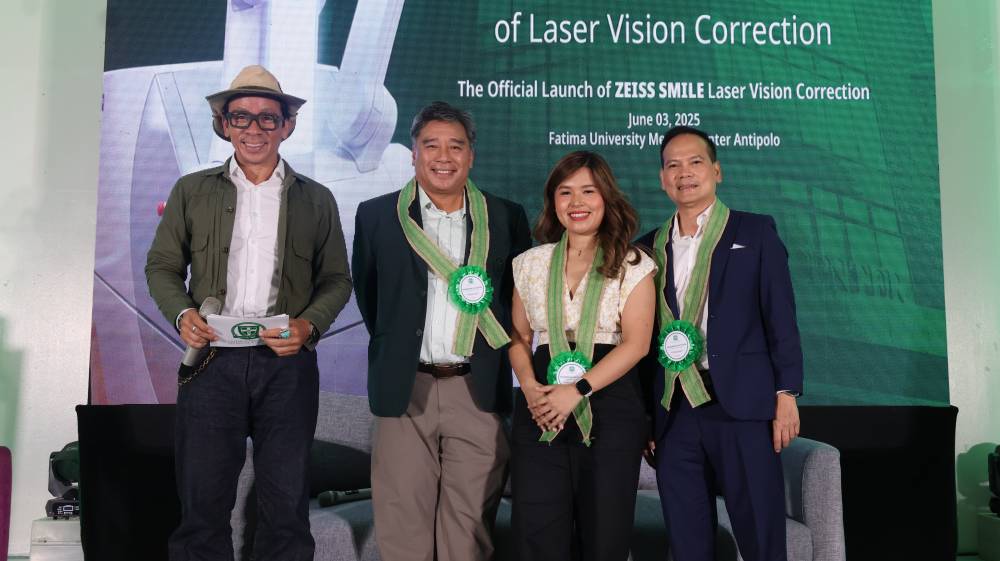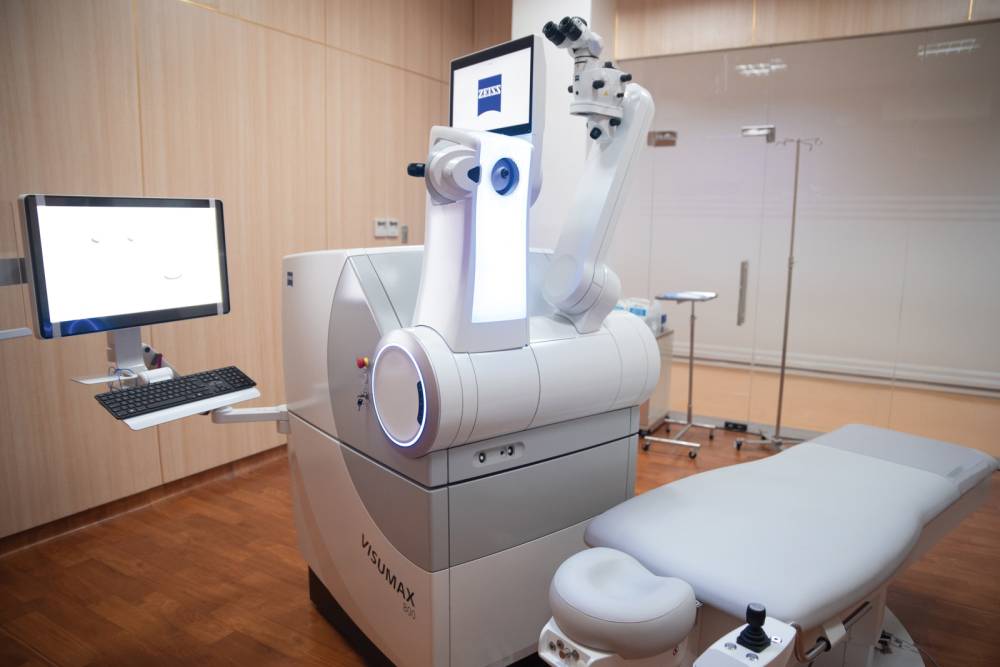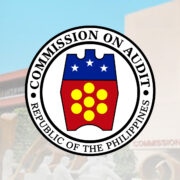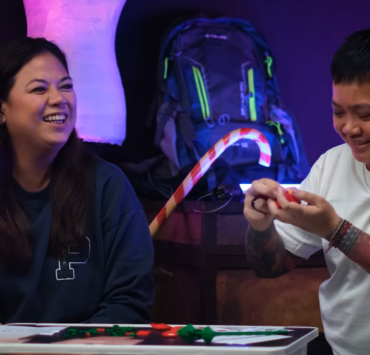Regaining 20/20 vision is reason to smile

What can you do in 10 seconds? Take a deep breath, sip your coffee, snap a selfie, or finally get 20/20 vision. Ten seconds or less is the approximate time needed for the laser to do its job, so you can have perfect vision through a Smile procedure.
Fatima University Medical Center Antipolo (FUMC), a trusted leader in eye care in the Philippines, launched the integration of the cutting-edge Zeiss Smile pro technology in its Eye Laser Center offerings on June 3. “Smile” stands for small incision lenticule extraction, but it is also coincidentally the shape of the incision it makes.
“Smile could also be because there will be a change in your lifestyle,” FUMC president Dr. Vicente Santos Jr told the audience who attended the launch hosted by TV personality Kim Atienza.
The procedure is a form of painless laser eye surgery used to correct vision problems like nearsightedness (myopia) and astigmatism. It’s considered a less invasive alternative to Lasik eye surgery.
The machine used to perform Smile at FUMC Antipolo is the Zeiss Visumax 800. It is the hospital’s second Zeiss Visumax unit, following its first femtosecond laser machine—the Visumax 500—acquired 10 years ago. Femtosecond lasers can target tissue with extreme accuracy, down to microns (millionths of a meter).
Advanced technology
Though the earlier version remains functional and is used in the hospital’s Valenzuela branch, Zeiss Visumax 800 showcases the latest advanced technology. There is improvement in terms of speed, digital precision, and comfort for the patients.
In a demo for press, Visumax 800 was shown to be an agile beast of a machine that moves according to the position of the patient. The bed is also designed to be more ergonomic.
The laser procedure is promised to last 10 seconds or less. We were told that the hospital record is 7 seconds in a procedure led by Santos himself. In comparison, its predecessor Visumax 500 would take approximately 13 seconds longer. The difference in price point is P10,000.

“If you’re willing to stay still for 13 seconds longer, you’ll get savings of P10,000,” said FUMC head of Refractive Surgery Dr. Jerome Sarmiento. FUMC is offering a promo on all of its laser procedures. Smile Pro, which uses Visumax 800, is offered at P99,000 from its original price of P150,000 for its first 100 patients. Smile, which is conducted in Valenzuela, is offered at P90,000 from P130,000.
Other offerings in this promo include the FemtoLasik procedure, which is at P70,000 from P90,000, and PRK for P50,000 from P65,000.
A checkup will tell you what the best procedure is for you to undergo at the price point you are willing to spend. That checkup is going to be very thorough.
During the launch, members of the press were given a tour of the diagnostic floor where the procedure will be conducted in the hospital. A wing is dedicated just for the series of eye examinations. Think of it as a visit to the eye doctor, but every little detail of your eyesight is given attention.
20-30 minutes
It begins with the simplest checkup of hypertension (you need to take your maintenance prior to checking). Imaging tests are conducted to check for curvature and thickness of the cornea and to help detect abnormalities such as keratoconus. The entire diagnostic process is longer and more arduous than the procedure itself, but this helps make it more successful.
When finally a patient is found to be eligible for the surgery, they will be brought into a clean room for the procedure. Fun fact: The machines have to be kept in a room with 24/7 air conditioning to protect their lenses. An entire procedure could last 20–30 minutes.
Santos also explained the differences between Smile and Lasik, the biggest being the size of the incision made on the cornea. Lasik creates a flap on the cornea of around 20 millimeters, while Smile only makes a small incision which is around 2 to 4 mm, resulting in less disruption on the surface.
Dr. Nikki Payawal, who underwent the Smile procedure, said that she experienced blurry vision right after the procedure, which was expected. However, her fears about the procedure being painful were allayed, because it wasn’t. The aftercare is also straightforward.
“I wasn’t allowed to swim in the sea for 48 hours,” she said. She also followed general care like not rubbing her eyes, or using shades for UV protection—things that people should be doing whether they’ve undergone the procedure or not.
“FUMC, as far as I know, is the first—and probably still the only—training hub for Smile procedures in Southeast Asia,” Santos said. “But technically, only around 20 people know how to do Smile.”
The youngest person eligible for the procedure must be at least 18 years old, as significant changes in vision are less likely to occur after. FUMC also has partnerships with several credit cards, and you can pay for treatment for the next two years at zero interest.

















